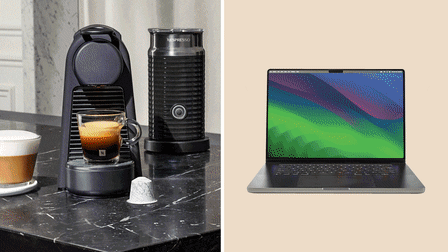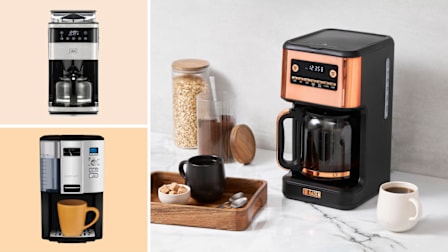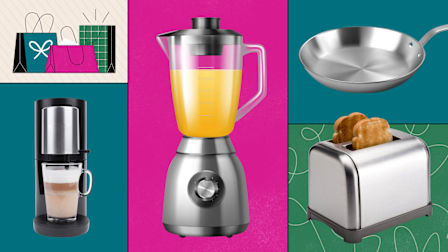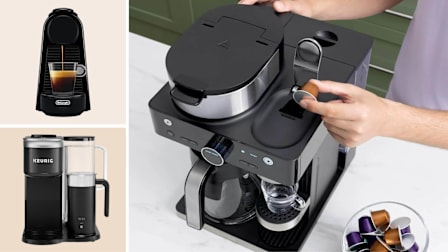How to Clean Your Coffee Maker
A clean machine will last longer and make better-tasting coffee
When you shop through retailer links on our site, we may earn affiliate commissions. 100% of the fees we collect are used to support our nonprofit mission. Learn more.
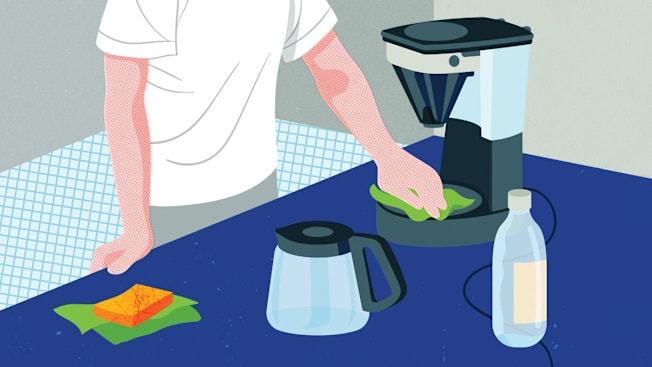
If you brew your own coffee at home, or if you plan to do it more often to save money, it’s important to clean your coffee maker regularly. Didn’t know you needed to clean it in the first place? Well, better late than never. Here’s what you need to know about how to clean your machine (certain models require more maintenance than others) and how often to do it.
You’ll find more general information about what to look for in a coffee maker in our buying guide. And if you’re in the market for a new coffee maker, read on for reviews of some of the easiest-to-clean, top-performing coffee makers from Consumer Reports’ coffee maker ratings.
How Often to Clean Your Coffee Maker
Coffee residue and mineral buildup can wreak havoc on your machine, affecting the quality of your brew and even causing your machine to malfunction.
Step 1: Clean the Brew Basket and Water Reservoir
If you use a drip coffee maker, you’ll want to rinse the brew basket every time you empty it. Now and then, it’s good to go the extra mile and wash it thoroughly in warm, soapy water. This will remove oily residue that can leave behind a bitter taste. While you’re at it, take a look at the sprayer head (the mechanism that sprays hot water onto your coffee grounds). These areas might have nooks or crevices you may want to wipe out with a cloth.
When we evaluate coffee makers for ease of cleaning, models get docked for having extra parts that need to be cleaned. You can expect the models below to be more straightforward.
Pod coffee makers don’t have a brew basket, but they usually have a removable water reservoir. You should remove the reservoir and wash it with soap and water. Some reservoirs can even be placed in the dishwasher, but consult the owner’s manual to be sure.
Step 2: Clean the Hotplate or Drip Tray
Unless your drip coffee maker has a thermal carafe, it will have a hotplate that keeps the coffee warm. When the hotplate has cooled, wipe off any spilled coffee. To remove burnt-on coffee stains, scrub the plate with a damp sponge and a little baking soda.
Rather than a hotplate, pod coffee makers feature a drip tray that your mug sits atop. The drip tray can collect coffee spillage and become a haven for germs.
“Bacteria can grow in room temperature coffee,” says James E. Rogers, PhD, CR’s head of product safety testing. Those could include E. coli, salmonella, and Listeria monocytogenes. So make sure to empty your drip tray regularly and clean it with soap and warm water. Rogers, a microbiologist, says he’d personally consider cleaning the drip tray every day.
Step 3: Remove Mineral Deposits
Minerals in your home’s water can clog your coffee maker’s tank and tubes. If it gets bad enough, the machine could stop working completely, or its brewing performance could be compromised; excessive steaming and increased brew cycle times are two telltale signs of trouble.
The removal of this mineral buildup is called descaling. If your machine has a cleaning indicator, it lights up when it’s time for a clean.
For most models, you’ll occasionally need to run a mixture of water and white vinegar through the machine. Check your instruction manual for the proper ratio, though, because vinegar can damage some metals and plastics. Finishing this descaling process doesn’t mean you can start brewing coffee right away, however. “Always run the brew cycle with water a couple of times to get rid of the vinegar taste before brewing coffee,” Lui says.
Some manufacturers, including Keurig and Nespresso, tell you to use their own special descaling solutions. Some brewers feature dedicated cleaning cycles as well, so check your manual for any specific cleaning instructions.
Step 4: Clean the Carafe on a Drip or Dual Machine
Whether your machine uses a glass carafe or an insulated thermal carafe, you should always clean it with soap and warm water after every brew. If you can’t remove coffee stains, fill the carafe with a solution of one part baking soda and two parts hot water, and let it stand overnight. Then rinse thoroughly with fresh water. Some carafes, especially thermal ones, have narrow openings, so if you can’t fit your hand or a sponge through to scrub inside the carafe, Lui recommends using a bottle brush.
Easy-to-Clean Coffee Makers
Would you rather start fresh? Here are drip, single-serve, and dual coffee maker models that perform well in our convenience tests. These tests evaluate how easy the machine is to clean, among other factors. In addition, we’ve listed some top cold brew machines, each with its own cleaning score.





























